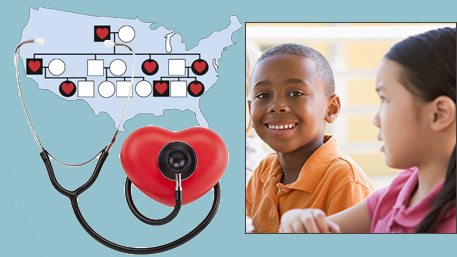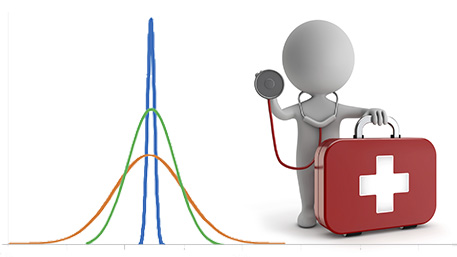Genomics and Precision Health Blog – Archive Posts
Advancing Genomic Medicine in Africa: Work in Progress

A 2021 report by the African Academy of Sciences (AAS), the Alliance for Accelerating Excellence in Science in Africa (AESA), and the African Union Development Agency (AUDA-NEPAD) presented a framework for the implementation of genomic medicine for public health in Africa. Globally, there is widespread recognition of the potential of genomic medicine (GM) to improve Read More >
Posted on byIncreasing Use and Impact of Family Health History in Medically Underserved Populations: Work in Progress

Despite years of public health efforts, family health history remains underutilized in clinical care, especially among people who are medically underserved. To address these issues, CDC’s Office of Genomics and Precision Public Health hosted a webinar on November 14, 2022, in conjunction with National Family Health History Day (Thanksgiving). The speakers called for better informed, Read More >
Posted on byPreventing Disease and Protecting Health Among Individuals at Increased Genetic Risk: A Lifespan Perspective and an Emerging Public Health Challenge

Since the completion of the Human Genome Project, major advances have occurred in the translation of human genome discoveries into clinical practice and disease prevention. As almost all human diseases are due to complex gene-environment interactions, the applications of human genomics should be pertinent to the prevention and control of many diseases, including rare and Read More >
Posted on byThe Use of Cell-free DNA in Clinical Practice: Work in Progress

A recent review outlines the use of circulating tumor DNA (ctDNA) in clinical practice and the requirements necessary to extend the use of this technology for health impact. Cell-free DNA (cfDNA) is extracellular strands of DNA present in body fluids. Circulating tumor DNA (ctDNA) is a specific type of cfDNA that originates from a primary tumor, circulating Read More >
Posted on byPublic Health Genomics at the Centers for Disease Control and Prevention: Happy 25th Anniversary!

In 1997, in response to the Human Genome Project, the CDC formed the Office of Genetics and Disease Prevention, now called the Office of Genomics and Precision Public Health (OGPPH). This was the beginning of the public health genomics movement in the United States and around the world. Our office continues to serve CDC programs, Read More >
Posted on by 1 CommentPreeclampsia, Genomics and Public Health

A recent study identified a cell free RNA (cfRNA) signature that was promising in predicting pre-eclampsia several weeks before the onset of symptoms. At 29 weeks pregnant, Erica was diagnosed with preeclampsia, a pregnancy complication marked by high blood pressure and signs of organ failure, most often liver or kidney damage. According to the Mayo Read More >
Posted on by 3 CommentsThe Limits of Risk Prediction: Remembering Cecile Janssens

“The number of possible ‘causal’ [gene-environment] interactions is so enormous that every patient’s disease likely has its own complex and unique cause. This uniqueness limits predictive ability: it is impossible to accurately predict something that has never occurred before.” Cecile Janssens, DNA tells great stories—about the past, not future, WIRED, December 5, 2013 Risk prediction Read More >
Posted on by 5 CommentsFamilial Hypercholesterolemia Screening in Children and Adolescents in the United States: Where Are We Heading?

A September 2022 publication recommended that every European country should have a Familial Hypercholesterolemia program for early detection screening, diagnosis, and care. Familial Hypercholesterolemia (FH) is a genetic condition that results in elevated levels of low-density lipoprotein cholesterol (LDL-C) from birth, resulting in increased risk of heart disease and myocardial infarction. A 2021 blog from Read More >
Posted on byFrom Polygenic Risk Scores to Methylation Risk Scores: What are the Clinical Applications?

A recent study used methylation risk scores to improve predictive value of baseline models for a range of clinical diagnoses and laboratory tests. The ability to understand and predict a person’s risk of disease is an integral component of precision medicine and precision public health. Many factors, including environmental and genetic, contribute to a person’s Read More >
Posted on byGenetic Discrimination and Misuse of Genetic Information: Areas of Possible Discrimination, Current Legislation, and Potential Limitations

The emergence and the rapid development of various genetic technologies and their incorporation into precision medicine have greatly expanded medicine’s capabilities. At the same time, concerns about the availability and dissemination of vast amounts of personally relevant data have focused attention on potential problems of genetic discrimination. Over the past three decades, concerns about genetic discrimination Read More >
Posted on by

